Flying over the waves
The overwhelming majority of American experts questioned the “Russian miracle”, mistaking it for a successful hoax, the purpose of which was to make Washington nervous and to send research in the military field in an unnecessary direction. And even if this is not a hoax, then, in any case, American experts considered that such a large ship-plane cannot be an effective combat weapon, and the very idea of building such devices for military purposes, whether it is a transport ekranoplan or its armed variant, has supposedly no prospects in the foreseeable future. True, there were some engineers abroad who believed in the reality of the “Caspian Monster” and the great future of WIG.
Sea vessel or plane?
There was nothing new in the very idea of a ship-plane. The phenomenon, called the screen effect, was experimentally detected in the beginning of the twentieth century - with the approach to the screen (surface of water or earth) the aerodynamic force on the wing of the aircraft increased. Aviators discovered that during landing, in the immediate vicinity of the ground, piloting an airplane was often seriously complicated, it seemed that he was sitting on an invisible cushion that prevented him from touching the hard surface.
Naturally, the pilots and aircraft designers did not need such an effect at all, but there were also those who managed to consider something more behind it - the basis for a new direction in the design of transport equipment. Thus, the idea of creating an aircraft of the new type arose as a first approximation, and an ekranoplan from the French words écran (screen, shield) and planer (soar, plan).
If to speak in scientific and technical language, WIGs are aircrafts that use the effect of increasing the aerodynamic quality of an aircraft (the ratio of its aerodynamic lift force to the drag coefficient) during its movement due to the proximity of the screen (surface of the earth, water, etc.). ), due to the fact that with the approach to the screen increases the aerodynamic lift on the wing.
At the same time, the International Maritime Organization (IMO) today refers ekranoplanes to sea-going ships, and their further development was an E-gun, which can not only follow the screen, but also break away from it and fly at high altitudes, like an ordinary plane.
The screen effect is very similar to the effect of the airbag on which the respective vessels are moving. Only in the case of a screen, this pillow is formed by forcing air not by special devices - fans on the ship, but by an incoming stream. That is, the winged surface effect vehicle creates lifting force not due to a drop in pressure above the upper plane, like in “normal” aircraft, but due to increased pressure below the lower plane, which can be created only at very small heights - from a few centimeters to several meters, depending on the size of the wing and wig. Moreover, with large WIG, the flight height “on the screen” can reach 10 and more than meters. The wider and longer the wing and the lower the speed, the stronger the effect.
Experienced ekranoplan - manned self-propelled model CM-6, which worked out the technical ideas that became the basis for the first serial ekranoplan "Eaglet". The CM-6 had one propulsion engine mounted on the keel and two starting, blown, engines. The Ekranoplan SM-2 was built in a new aero-hydrodynamic layout scheme with a low-lying herringbone. WIG construction - all-metal, riveted
The first experiments
At one time, the French inventor Clement Ader tried to use the screen effect (still undiscovered then), who built and tested the Eol boat in 1890, which had a large folding wing and a tail horizontal stabilizer, which made it possible to partially unload the displacement vessel. Under the wing of the car, special channels were made, through which air was raised by means of high-speed head. Subsequently, Ader built a boat, in which air under the wing was supplied by a compressor.
The main works on new devices that use the screen effect when they are moving are from the beginning of the 1930s, although theoretical papers on this topic began to be published much earlier. So, for example, in 1922, the USSR published an article by aerodynamics specialist Boris Nikolayevich Yuriev “The Influence of the Earth on the Aerodynamic Properties of a Wing”. In it, the inventor of the swashplate (device to control the rotor blades), the future member of the USSR Academy of Sciences and the general-lieutenant of engineering and technical services, actually gave the green light to the creation of ekranoplans, theoretically justifying the possibility of practical use of the screen effect.
In general, the contribution of domestic scientists and engineers to ekranoplanostroenie huge, if not decisive. Probably the first practical development in this area is well known to specialists - the amphibian ekranoleta project proposed by the Soviet aviation engineer Pavel Ignatievich Grokhovsky. “I came up with the idea of using an“ air cushion ”, that is, compressed air formed under the wings from the speed of flight. An amphibious ship can fly and glide not only above the ground, above the sea and the river, - wrote P.I. Grokhovsky in the early 1930s. - Flying over a river is even more expedient than over land, because a river is a long, smooth road, without mounds, hills and humps ... An amphibious ship allows you to transport goods and people all year round at a speed of 200-300 km / h, in summer on floats, in winter skiing. "
The American Columbia military transport ship, designed in 1962 year. The project remained unrealized.
And already in 1932, Grokhovsky and his comrades-in-arms designed a full-scale model of a new marine catamaran aircraft, which had a center section with a large chord, end elements in the form of fuselages-floats and two M-25 engines with a capacity of about 700 l located in the bows of the latter. with., as well as the rotary flap, which allowed to increase the lift force during takeoff and landing. This "protoekranoplan" could slide at a small height above any flat surface. Moreover, the aerodynamic layout is rather large by the standards of the machine at that time and is also characteristic of a number of modern devices of this class.
In the winter of the same year, the Finnish engineer Toomas Kaario, who in the West is considered the “first creator of the real ekranoplan”, began testing the designed aircraft using the screen effect and built according to the “flying wing” scheme. The experiments were conducted on the ice of a frozen lake: the ground-effect vehicle was not self-propelled and was towed by a snowmobile. And only in 1935 — 1936, Toomas Kaario managed to build a ground-effect vehicle equipped with one 16-strong engine and an air propeller, but his aircraft-ship flew only a few meters and fell apart. After World War II, he continued to work in this area and created several more experimental devices, but none of them went into the series.
In 1940, the American engineer D. Warner created a strange device, which he called a compressor plane. It was actually a wing-mounted boat that floated on the water, but not on an air cushion, as modern KVP, but on an air stream created by two powerful fans located in the bow and being inflated under the bottom of the vessel. The cruise mode of "navigation" was provided by two aircraft engines with propellers located on the main bearing wing. Thus, the American for the first time proposed to separate the starting (blowing) and marching power plants.
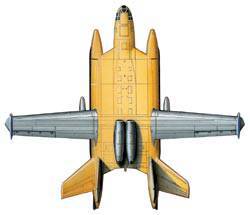 One of the active supporters of ekranoplanostroeniya in the USSR was Robert Bartini, under the direct supervision of which an ekranolet was created - a vertically taking off amphibian aircraft BBA-14М1P with a maximum take-off weight of 52 tons and a range of about 2500 km
One of the active supporters of ekranoplanostroeniya in the USSR was Robert Bartini, under the direct supervision of which an ekranolet was created - a vertically taking off amphibian aircraft BBA-14М1P with a maximum take-off weight of 52 tons and a range of about 2500 km Interest on paper
Only a few years after the end of the Second World War, interest in ekranoplannom subjects resumed. The United States attempted to intercept the first place here - as early as 1948, engineer H. Sundstedt created the six-seater apparatus. And designer William Bertelson in 1958 — 1963 lifted several WIGs into the air at once with engines up to 200 l. with. and made several important presentations on this topic at various scientific symposia and congresses. In the same 1963, engineer N. Diskinson also built an ekranoplan; the following year, Swiss H. Weiland created his ekranoplan in the USA, which, however, crashed during tests in California.
Finally, at the scientific conference "Hydrofoil and Air Cushion Court" held by 17 — 18 on September 1962 in New York by the American Institute of Aerospace Research, President of Vehicle Research Corporation Scott Rethorst presented the project developed with his personal participation and with the support of the US Maritime Administration 100-toned WIG "Columbia", created by the scheme "flying wing" and capable of speeds up to 100 nodes. At the same time, the British who did not want to fall behind announced the draft of an airplane-aircraft carrier, proposed by designer A. Pedrik, which was supposed to be based on 20 — 30 aircraft.
In 1964, Rethorst began to build a model of his “miracle ship”. Based on the results of his own work, Rethorst in the 1966 year patents "The ship using the screen effect" (patent No. 19104), but this is not the case, and soon the project is minimized. And in the same 1966-m specialists of the company Grumman offered no less ambitious project 300-toned wig, capable of carrying guided missiles.
The famous German aircraft designer Alexander Lippish achieved the greatest success in the West. He became the ideological inspirer of the Kometa Me-163 jet fighter project during the Second World War and settled in the USA after the collapse of the Third Reich.
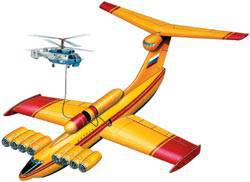 The Rostislav Alekseev team offered more than a dozen options for ekranoplanes and ekranolet for various purposes. It depicts an ekranoplan supplier, which was proposed to be used as part of the armed forces of the Ministry of Maritime fleet and other agencies to support the actions of ship and aviation groups in remote areas of the oceans. For example, provide fueling for helicopters. The rescue ekranoplan “Rescuer” should have looked almost the same
The Rostislav Alekseev team offered more than a dozen options for ekranoplanes and ekranolet for various purposes. It depicts an ekranoplan supplier, which was proposed to be used as part of the armed forces of the Ministry of Maritime fleet and other agencies to support the actions of ship and aviation groups in remote areas of the oceans. For example, provide fueling for helicopters. The rescue ekranoplan “Rescuer” should have looked almost the same Working with 1950 to 1964 for the year in the aviation division of the Collins Radio Company, Alexander Lippish led the development of the basic aerodynamic scheme of an airplane (one of the three existing today, and very successful), called the Lippish scheme. It is characterized by a marquee-shaped wing, which holds the air pressure between the wing and the screen well and has the lowest inductive resistance. The plumage is located high above the wing in a T-shaped pattern, and for its launch from the water floats are used at the ends of the wing and a gliding hull-boat.
Unfortunately, in 1964, Lippish fell ill and he had to leave the company, but he managed to propose an X-112 WIG project. After recovering from an illness, in 1966, he created his own company, Lippisch Research Corporation, and four years later offered a new sample X-113, and four years later - his last project of X-114 EK-MAN, which in the five-seater patrol version was ordered by the German Defense Ministry built and put into service.
“From the pier, slowly picking up speed, a small motorboat, equipped with a powerful engine, and a strange-looking device, resembling a short-winged seaplane, moved. Having developed a speed of about 80 km / h, the “hydro” pulled away from the surface and, without gaining height, as it should be, slid over the lake, leaving a motorboat far behind the stern ”, and this is about testing the Rhine in 1974, the first ship-to-be built by Günter Jörg, a student of Lippisch and the inventor of the third ekranoplan scheme. In the “tandem” scheme, two approximately identical wings are located one behind the other; it has longitudinal stability, but in a limited range of pitch angles and flight altitudes.
True, all these projects and developments did not go beyond paper, small models or experimental machines. That is why, when Americans learned in 1966 — 1967 that 500 ton was worn over the waves of the Caspian Sea, they experienced surprise mixed with disbelief.
Ekranoplans of the “Eaglet” type were built from 1974 to 1983.
Italian aristocrat
Soviet designers are again ahead of their foreign competitors - by and large only the Soviet command-administrative economy and the science and industry subordinate to the authorities were able to cope with such an ambitious and complex task as the creation of large, rather than small (in one or two tons) ekranoplans and ekranolet.
For example, back in 1963, students of the Odessa Institute of Marine Engineers, under the guidance of Yu.A. Budnitskogo developed a single-seat EKIMF-18 equipped with a 60-powerful Izh-1K engine. By 1966, the students built the third model - OIIMF-3 (according to the “flying wing” scheme). But these were only "amateurs", for the development of ekranoplanostroeniya required professionals. One of them was the Soviet designer Robert Ludwigovich Bartini (also known as Italian aristocrat Roberto Oros di Bartini), who left his homeland in 1920-s and later wrote in his personal data in the “nationality” - “Russian” column, explaining his decision in a very original way: "Every 10 — 15 years, the cells of the human body are completely updated, and since I have lived in Russia for more than 40 years, not a single Italian molecule remains in me.”
It was Bartini who developed the “Theory of Intercontinental Land Transport”, where he assessed the performance of various types of vehicles - ships, airplanes and helicopters - and determined that the most effective for intercontinental routes is an amphibious vehicle with vertical takeoff and landing or using an air cushion. Only in this case it would be possible to successfully combine the large capacity of the ships, the high speed and maneuverability of the aircraft.
Bartini began to work on the project of an ekranoplan with hydrofoils, from which the EKVP-2500 EKLONET 2500 tons of take-off weight, which had the appearance of a “flying wing” with a square center section and consoles and equipped with a power plant made of lifting and cruising engines, subsequently emerged. The test results of models in 1963 at TsAGI proved promising. After some time, Bartini made a decision to modify the first 1M prototype machine into a screen plane, with air blown from additional engines under the center section. But he was not destined to see the flight of his 14M1P - in December 1974, Bartini passed away. The ekranolet soared into the sky, but already in 1976, the BBA-14М1П project (a high-placed wing and supporting body, the estimated maximum speed of 760 km / h and the practical ceiling 8000 — 10 000 meters) closed.
The next strategic breakthrough in the design of aircraft ships occurred in Gorky: Rostislav Alekseev was the author of the new project.
The most "fresh" product of American experts in the field of ekranoplanostroeniya was the project of a heavy military transport screening vehicle "Pelikan", capable, according to calculations, to take on board up to 680 tons of cargo and transfer it to transoceanic distances - up to 18 500 km
The birth of "dragon"
The first domestic manned jet ekranoplan SM-1 kilograms 2380 take-off weight made in the CDB on hydrofoil vessels with the direct participation of Alekseev in 1960 — 1961. It is based on the “tandem” or “two-point scheme” scheme. In the first flight, he was piloted by the “chief” himself, and in the late autumn of 1961, Alekseev “rolled” on the apparatus of the all-powerful Dmitry Ustinov, then still the deputy chairman of the USSR Council of Ministers, and the chairman of the State Committee on Shipbuilding Boris Butom. With the latter, however, bad luck came - on the first tack out of fuel. While the tugboat came, the official chilled to the bones and after that, as contemporaries say, literally hated the “alien” sudpromu “flying ships”, and Alekseev himself too. His words expressed about the EKL are known: “He does not deal with the fact that he flies above the telegraph pole!” If it were not for Dmitry Ustinov and the commander-in-chief of the Navy Sergey Gorshkov, we would have to talk only about German and American ekranoplanes in this article.
At the beginning of the 1960-s, the Soviet Navy became actively interested in the subject of WIG, ordering the development of three types: paratrooper, percussion and anti-submarine. But the “tandem” scheme was not suitable for them, so Alekseev developed a new one, according to which the second ground-effect vehicle is being built - the CM-2. At this device for the first time the air stream from the engine went under a wing (having blown), creating a compulsory dynamic airbag.
From now on, the layout of the ground effect vehicle is as follows: a wide, low-lying wing of small elongation; wing end washers that improve near-screen aerodynamics and reduce the inductive drag of the wing; a well-developed T-shaped tail, a high keel and a horizontal stabilizer mounted high on it with a rudder; aerodynamically perfect hull with a rented bottom; certain placement of engines and the organization of a podduv under a wing. Starting from the water and going ashore are provided with an air cushion of the flow-through scheme - the engines deflect the air jets under the wing. Such a scheme required more stabilization work, but it allowed achieving higher speeds and payloads.
1964 year was tragic - CM-5 on the test hit the powerful counter-air flow, it swung and lifted abruptly, the pilots turned on an afterburner to climb, but the device broke away from the screen and lost stability, the crew died. We had to urgently build a new model - CM-8.
Finally, in 1966, a giant KM ekranoplan (“mock-up ship”), created as part of the Dragon project, was put to testing, work on which Alekseev had begun back in 1962. The ship was laid down on the slipway on April 23, 1963 - it was built as a combat ekranoplan for the Navy and was supposed to fly at a height of several meters. Two years later, work began on the project of the military transport vehicle T-1 for the Airborne Forces, which was supposed to rise to a height of 7500 meters. Its carrying capacity would be up to 40 tons, which ensured the transfer to a range of up to 4000 kilometers of average tank and platoon of infantry with weapons and equipment or 150 paratroopers with equipment (near the screen), or at a distance of 2000 kilometers (at an altitude of 4000 meters).
22 June 1966 year CM launched and sent to a special test base in the Caspian Sea, under the city of Kaspiysk. For almost a month, he, half-heated, with a detached wing and covered with a mask, was dragged along the Volga at night in the strictest secrecy. By the way, about secrecy: contemporaries recalled that it was on the day of launching the CM to the water that the Voice of America radio station reported that a ship with a new principle of movement was built at this plant!
When the CM arrived at the base, the officials demanded an “immediate flight”, and Alekseev organized a “flight in the dock” for them. All the 10 engines started to work, the cables holding the device tightened like strings, a wooden fence that fell under the engine exhaust began to break on the shore, and with 40% of the nominal dock with the KM ekranoplan moored in it, disrupting the anchors, moved off. Then the car went out to sea - a heavy giant showed phenomenal qualities, steadily following the screen at an altitude of 3 — 4 meters at a cruising speed of 400 — 450 km / h. At the same time, the device was so stable in flight that the “main” one sometimes stopped showing control of the device and even turned off the engines in flight.
During the work on the CM, a lot of questions arose that needed to be resolved as soon as possible. So, for example, it turned out that the standard AMG-61 shipbuilding alloy used for the main body and the D-16 aircraft alloy used in the “monster” superstructure do not allow for the required weight return. Soviet metallurgists had to invent new, stronger and lighter alloys, which are also extremely resistant to corrosion.
The tests of the “Caspian Monster” were conducted on the sea for a decade and a half, but ended very sadly: 9 February 1980 of the year Rostislav Alekseev died. And in the same year, the KM died - the pilot pulled up his nose too sharply when taking off, she quickly and almost vertically went up, the confused pilot abruptly dropped the thrust and did not follow the instructions with the rudder - the ship fell on the left wing and, hitting the water, sank. The unique giant could not outlive its creator.
The full displacement of the Eaglet 140 t, length 58,1 m, width 31,5 m, speed up to 400 km / h (can cross the Caspian Sea in just an hour), takeoff from a wave to 1,5 m and with sea waves up to 4 points, crew 9 people ., payload 20 t (a company of marines with full armament or two armored personnel carriers or infantry fighting vehicles)
"Eaglet" learns to fly
In 1970, work in this area was literally boiling. Alekseev did not have time to realize the “big jump” by moving from 5-ton models immediately to 500-ton CM, as in the 1968 year, the Navy issues a task for the 904 “Orlyonok” airborne transport screening vehicle. And now a new success - in 1972, an experimental CM-6 appears. The main requirements are high payload and speed, as well as the ability to overcome antiamphibious barriers and minefields (when seizing bridgeheads on the protected coast of the enemy).
The T-1 project was taken as a basis, the scheme is a normal aircraft, three-engine low-winged plane with a T-shaped tail assembly and a hull-boat. The crew - commander, co-pilot, mechanic, navigator, radio operator and gunner. When transporting the assault force, two vehicles were additionally included in the crew.
The body of the T-1 is made together with the center section and consists of three parts - the nose rotary (rotated 90 degrees), the middle (cargo-passenger compartment) and the aft. The crew cabin, machine-gun installation, rest cabin and compartments for various equipment were located in the bow. The admirals, enthusiastic in those years to create a powerful ocean nuclear missile fleet, intended to purchase an “eaglet” before 100, which would have required the construction of new plants at which it was supposed to organize a block-aggregate assembly method. Then, however, the order was adjusted to 24.
3 November 1979 of the Eagle-150-type Orlyonok amphibious assault aircraft was raised with a naval flag and the ship was incorporated into the Caspian flotilla. The second unit became part of the Navy after the death of the "main", in October 1981. Both ships took part in the exercises of the Transcaucasian Military District - the ship could take on board for landing ashore before the 200 marines or two amphibious tanks, an armored personnel carrier or a BMP. And in 1983, the fleet received the third EKR, the MDE-160. Today we have only one “miracle ship” of this type left - the one that stands in Moscow.
In 1988, it was decided to reveal the tactical capabilities of Orlyonka more fully. The task was formulated as follows: to transfer troops from the Baku area to the Krasnovodsk region. Conventional ships, hovercraft, and a screen flyer were attracted to its solution by comparison. The first went to sea in a day before the X-hour, the second - in six hours, and the "Eaglet" came out in two hours, overtook everyone on the way and landed the first landing force!
Ekranoplan-rocket carrier project 903 "Lun". Full displacement - up to 400 t, length - 73,3 m, width - 44 m, height - 20 m, draft in displacement position - 2,5 m, full speed - about 500 km / h, crew - 15 people, armament - 8 PU supersonic anti-ship missiles 3M-80 "Mosquito"
Leadership change
The rocket carrier Lun (project 903), built by order of the Soviet Navy and exceeding almost all light missile ships and many attack aircraft, became the apogee of ekranoplanostroeniya in our country, and it turned out to be comparable to a missile destroyer by the power of a missile salvo. Lun launched 16 on July 1986 of the year, and 26 of December 1989 completed its tests, the total duration of which was 42 hours 15 minutes, of which in flight - 24 hours. During the tests, they made firing for the first time at ground speed of about 500 km / h. The second ship of the 903 project was laid in Gorky in the 1987 year, but then it was decided to re-equip from the missile carrier to the search and rescue variant, conventionally naming the “Rescuer”. The capacity of the vehicle is 500 people, take-off weight of 400 tons, flight speed more than 500 km / h, flight range up to 4000 kilometers. At the “Savior” project, a hospital with an operating and intensive care unit, as well as a special treatment post for assistance to the victims of the accident atomic power plants, are envisaged. In this case, the winged surface effect vehicle could be used for rapid simultaneous deployment and launching of rescue equipment, including with great agitation. The duty “Rescuer” could go out into the sea within 10 — 15 minutes after the alarm.
But soon perestroika came, followed by the collapse of the Soviet Union - the country was not up to the “miracle ship”. The Strizh training echelon of the Swift passed to the fleet in 1991 did not find particular use, the Lun did not even leave the trial operation stage, and the Rescuer remained unfinished on the stocks. The rest of the cars were either lost in accidents and disasters, or simply thrown on the shore. The small civilian ekranoplanes, such as the Volga-2, did not go to the series either.
Today, the United States, which is actively carrying out work on manned and even unmanned ekranoplanes and ekronolets and trying to accumulate not only ideas and developments in other countries, is trying to break into leaders in this field.
For example, for several years, the American corporation Boeing, with the active participation of Phantom Works commissioned by the Pentagon, has been designing a heavy Pelican military transport vehicle with a wingspan of more than 150 meters and capable, according to the developer, to transfer in the “on-screen” mode cargo weighing up to 680 tons for distances up to 18 500 kilometers. "Pelican" is planned to equip the chassis with 38-wheel pairs - to ensure take-off and landing with a conventional runway. Fragmentary information about this program began to arrive for a long time, but for the first time detailed information on the E-plane Boeing published only in 2002 year. It is planned to use Pelikan on trans-oceanic routes, which will allow, for example, to transfer Abrams МNNXX tanks to 17 for one flight. It is alleged that, thanks to four new turboprop engines, the unit will be able to rise to an altitude of up to 1 meters, but in this case, off-screen, the range will drop to 6100 kilometers.
But the American company Oregon Iron Works Inc., specializing in the field of industrial construction and the production of marine equipment, under a contract with the US Department of Defense is conducting a preliminary study of the project of an “unmanned airborne high-speed radar vehicle that is inconspicuous for radar and capable of moving on The name is "Sea Scout" or "Marine Scout."
Other countries are not lagging behind Washington. For example, in September 2007, the South Korean government announced plans to build an 2012-ton commercial ground-effect vehicle capable of transporting tons of cargo up to 300 tons at speeds of 100 — 250 km / h by 300. Its estimated dimensions are: length - 77 meters, width - 65 meters, budget of the program up to 2012 of the year - 91,7 million dollars. And representatives of the Chinese Shanghai University of Civil Engineering recently said that they are completing the development of projects of several X-NUMX-10-toned models at once, and by 200, more than 2017-EKPs capable of carrying loads of more than 200 tonnes will be released for regular transportation. And only in Russia they cannot find the money even for the completion of the unique WIG "Escape" ...
Illustrations by Mikhail Dmitriev
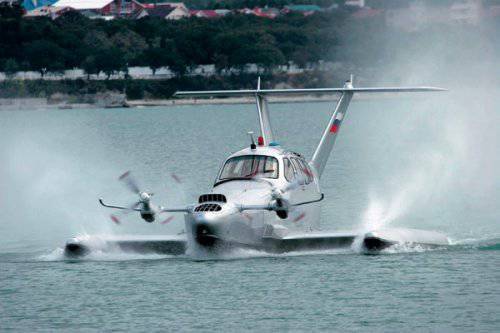
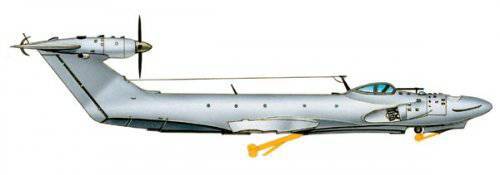

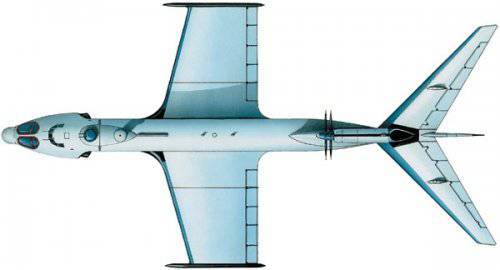
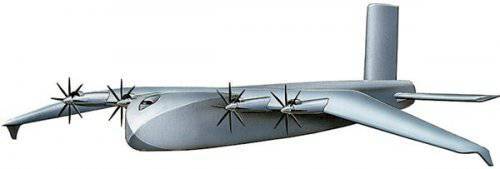

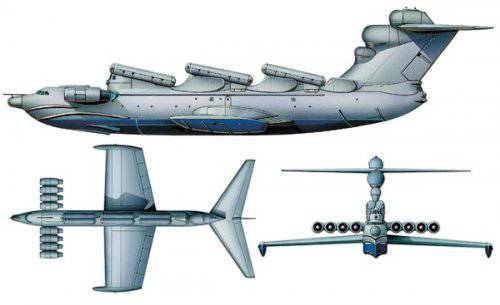
Information